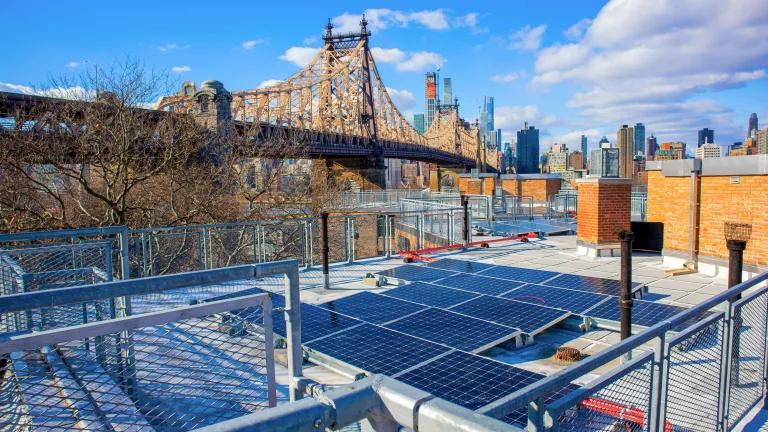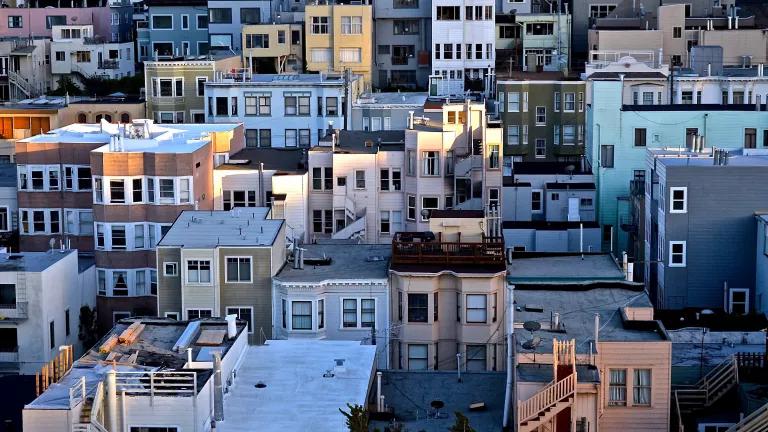
Utilities can avoid large investments in infrastructure like electric substations by investing in non-wires alternatives
As Governor Cuomo prepares to announce a comprehensive energy efficiency framework on Earth Day and continues to move forward with New York’s Reforming the Energy Vision (REV) strategy, it is important to remember the role that utilities can play in advancing energy efficiency.
REV, announced four years ago, aims to help New York meet its nation-leading clean energy goals. While New York has a bold program already in place to ensure 50 percent our electricity demand is met with renewable energy like wind and solar by 2030, there is no comparable commitment yet to scale up energy efficiency. To ensure success, New York needs to empower utilities to invest in energy-saving technologies as part of the efficiency framework that the governor plans to announce on Earth Day, April 22.
The governor’s energy efficiency plan will likely include many different components, such as more aggressive building energy codes that require new construction and retrofits to include energy-saving technologies like improved insulation and windows, as well as appliance standards that save customers money and cut down on wasted energy. One particularly critical piece of a successful Earth Day announcement is outlining a plan to require utilities to scale up energy efficiency, and give them the resources to do so. Just as the Clean Energy Standard mandates that utilities buy more renewable energy each year, a similar program can and should require them to invest more in energy efficiency programs every year. That can be accomplished through an approach that combines best practices in other states with New York’s unique REV framework.
Currently each utility sets yearly energy efficiency targets which are approved by the Public Service Commission through the rate case process. As shown by unimpressive proposals in recent rate cases, if the expectations of utilities are not clear and the prospects of recovering the costs of facilitating a robust scale-up of the energy efficiency market are uncertain, then utilities won’t set ambitious targets at the levels needed to meet New York’s clean energy goals.
While recent rate cases have approved yearly energy efficiency targets of roughly 1 percent of total annual electricity sales, utilities can and should aim for higher targets. Experience from other states demonstrates that if utilities are required to meet ambitious yet feasible targets, simple programs like these can add up to huge savings over time. Ramping up to 3 percent of energy savings per year as is being achieved in other states could save New Yorkers billions on energy bills by 2030.
How can utilities advance energy efficiency?
Utilities can invest in energy efficiency in a variety of ways. One method currently employed by New York utilities, for example, is to provide discounts on energy efficient lighting, heating, and cooling equipment. These programs encourage customers to save energy, which helps the utilities avoid costly grid infrastructure, reduces the need to build new power plants, while also reducing climate-warming carbon emissions and other harmful pollution.
But utilities also have also experimenting with programs to foster greater competition among energy efficiency providers. That’s where REV comes in. A core goal of REV is to spur competition to develop distributed energy resources (DERs), which unlike centralized traditional power plants, are spread-out physical and virtual assets that can be aggregated to serve customers’ energy needs.
These resources include energy efficiency technologies such as LED light bulbs and insulation that reduces a building’s electricity use as well as appliances such as heat pumps that reduce the amount of fossil fuels burned on-site in buildings. Other DERs include rooftop solar panels, and demand response programs that encourage customers to use less energy at times when energy demand is highest.
Distribution System Platform
To effectively foster a market for energy efficiency and other distributed energy resources through REV, the New York Public Service Commission dictated that utilities should act as Distribution System Platforms (DSP), facilitating a market for DERs. That means the utilities should play a leading role in buying energy saving programs and products.
Part of a utilities’ role as the DSP is to provide information about system needs to developers, so they can more effectively target customers and plan the deployment of distributed energy resources. For example, utilities can notify households with the highest energy consumption in a neighborhood about opportunities to reduce their bills through retrofits such as insulating windows or upgrading to more efficient heating systems.
REV also envisions utilities as operating a market for DERs. The Public Service Commission has already encouraged the state’s utilities to set up markets for “non-wires solutions.” This means that utilities are soliciting bids from DER developers to deploy energy efficiency, solar energy, energy storage, and other solutions to avoid the need to build specific grid infrastructure, like substations. In one example of this, Con Edison implemented the Brooklyn-Queens Demand Management program and invested in DERs (including energy efficiency) to defer a roughly $1 billion substation upgrade.
But energy efficiency’s benefits go far beyond the ability to help avoid grid infrastructure. They include lower carbon emissions and customer bill savings. It is therefore important that, in their role as DSPs, utilities also facilitate markets that account for this full range of benefits.
Fortunately, there has already been a lot of work done on running competitive energy efficiency programs, and New York can build on that progress rather than reinventing the wheel. New York’s Clean Energy Advisory Council released a report last year, explaining how utilities can put out requests for proposals to procure energy efficiency from third-party vendors, citing several examples of states where this has been done. For example, a utility can pay an energy efficiency company to install equipment or implement programs that reduce electric demand in a specific region that would otherwise require additional infrastructure such as transmission lines or a substation to serve.
Drawing on this approach, the New York State Energy Research and Development Authority (NYSERDA) presented a framework for an innovative energy efficiency procurement approach called Pay-for-Performance (P4P). P4P essentially allows energy efficiency companies to compete for contracts that specify how much energy is expected to be saved, and then pays the price offered by the bidders for energy savings as they occur. P4P has been used successfully across the U.S. as shown by NRDC analysis of 22 case studies.
Set clear cost recovery rules and long-term targets
Utilities can only serve as Distributed System Platforms for energy efficiency if they are able to recover the costs of procuring efficiency through the markets that they facilitate, and if expectations are set about how much efficiency they should invest in through those markets. A successful centralized energy efficiency initiative will provide the framework for utilities to set and meet ambitious targets and stimulate markets by procuring energy efficiency and delivering its benefits to customers.

As the DSP, utilities can invest in energy efficiency and deliver to customers its many benefits including lower customer bills.
Build from existing models
While more can be done to improve DER markets, there is no need to reinvent the wheel when it comes to tried and true approaches to scaling up energy efficiency. The Public Service Commission can and should draw on and refine proven models for bolstering a market for energy efficiency. At the same time, incremental improvements can drive better results. For example, as discussed in this Clean Energy Advisory Council report, new techniques for measuring the amount of energy efficiency saved will help utilities procure energy efficiency competitively from many different suppliers.
In its P4P pilot, NYSERDA is planning to use actual utility meter data from before and after energy efficiency improvements are implemented, aggregating information from many similar customers to ensure that statistical anomalies don’t drive the results. Techniques such as this could also eventually help guide energy efficiency investments to save energy where and when it is needed the most.

State and Local Energy Efficiency Action Network, Energy Efficiency Program Impact Evaluation Guide (2012).
Incremental improvements to existing programs can help increase competition and create a robust energy efficiency market. Cuomo’s forthcoming energy efficiency announcement could serve as an important step in giving utilities the guidance and resources needed to facilitate a cleaner and more efficient energy system in their role as Distributed System Platforms. This will go a long way in helping customers realize the many economic, environmental, and health benefits that energy efficiency offers—all while creating thousands of jobs in the Empire State.



